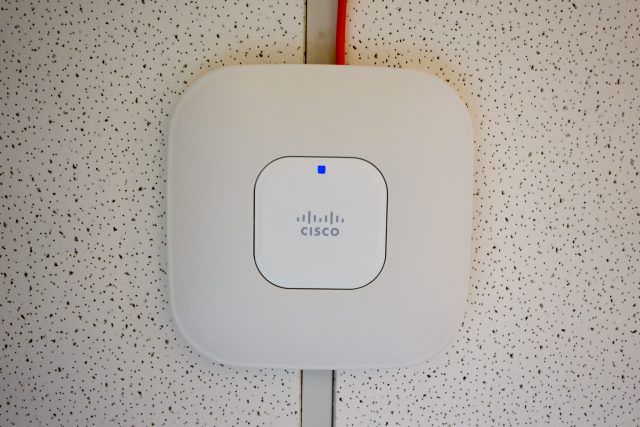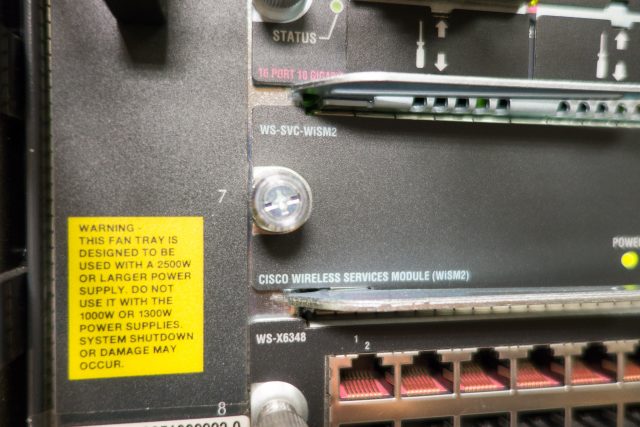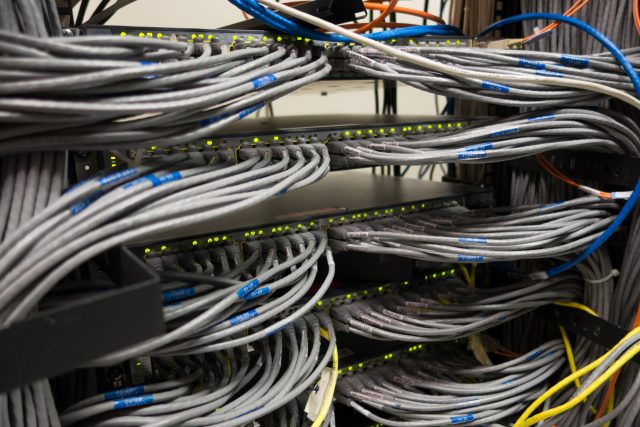 When we talk about enterprise wireless networks, we often downplay the role of the wireless access point. The thingy at home you call a wireless router is actually smarter than the wireless access points we use in an enterprise network. Our wireless access points are “light-weight”, which is a nice way of saying they’re quite dumb.
When we talk about enterprise wireless networks, we often downplay the role of the wireless access point. The thingy at home you call a wireless router is actually smarter than the wireless access points we use in an enterprise network. Our wireless access points are “light-weight”, which is a nice way of saying they’re quite dumb.
After our bit of excitement with wireless last week, I think it might be interesting to talk about how enterprise wireless networks work in general.
Enterprise wireless works quite differently from the consumer-grade wireless routers. All the wireless access points you see out in the open, such as the one in the photo below, are essentially just antennas. They don’t do much work. In fact, they are completely useless on their own. They can’t even boot up into an operational state.
These wireless access points need to connect back to a wireless controller backend in order to work. The wireless controller provides all the intelligence to the wireless network. It provides firmware for the access points, manages wireless radios at the access points, and provisions wireless services. Access points typically send or tunnel traffic back to the controller, and the latter performs traffic switching, applying QoS, etc. The wireless controller, together with all the wireless access points, form the basic wireless network infrastructure.
Yup, that’s just the basic part of it. There’s still much more to come. You see, the wireless controller is also quite useless without authentication servers. The wireless controller cannot route too, so you need routers. It doesn’t firewall. It can’t perform NAT. While it may have an internal DHCP server, we often offload DHCP functions to external servers too.
That $150 or so wireless router sitting in your home seems to be so much more capable.
Of course, there are absolutely good reasons why we need these enterprise wireless solutions and why they are better. You see, what they lack in the breadth of functions (and thus requiring multiple other components), they make up for in the insane depth of capabilities.
For example, our frequency (channel) selection is done automatically based on monitoring the radio environment. Radio transmission powers are automatically adjusted to minimise overlap coverage. In fact, radio transmission powers can even be increased to overcome a coverage gap (such as when a neighbouring access point goes down).
Wireless clients can be smoothly handed off from access points to access points. They are, after all, just extensions of the wireless controllers they are joined to. Furthermore, wireless clients can roam to neighbouring wireless controllers. Think of this like a 3G/4G phone that travels from cell tower to cell tower, and further on from telco to another telco roaming partner. (Just a layman analogy, don’t try to dig too much into the technicalities.)
Our wireless network can influence band selection on the client, pushing clients to less congested access points on less crowded radio channels. The infrastructure is capable of provisioning multiple class of services. Two clients can be configured the same way, but we can distinguish them and connect them to different network backends. There are so many service policies that we can configure.
Some of the fancy “tracing IP address” sort of scenes you see from crime shows on TV (like CSI, NCIS, etc), well, they are sort of real. Yes, the wireless network can sort of triangulate wireless clients. In fact, one of the applications of this feature is in inventory and asset control, where 802.11 tags are attached to tracked items.
The wireless access points don’t have to be directly attached to their joined controller. In fact, they don’t even have to be on the same network. As long as the wireless access point has some sort of IP reachability to the controller, that will work fine. That means the wireless access point can be anywhere, even in remote locations across the Internet. In NUS, for example, some internal shuttle buses carry wireless access points that connect back to wireless controllers on the campus network via 3G.
This is how enterprise wireless is different.




View Comment Policy